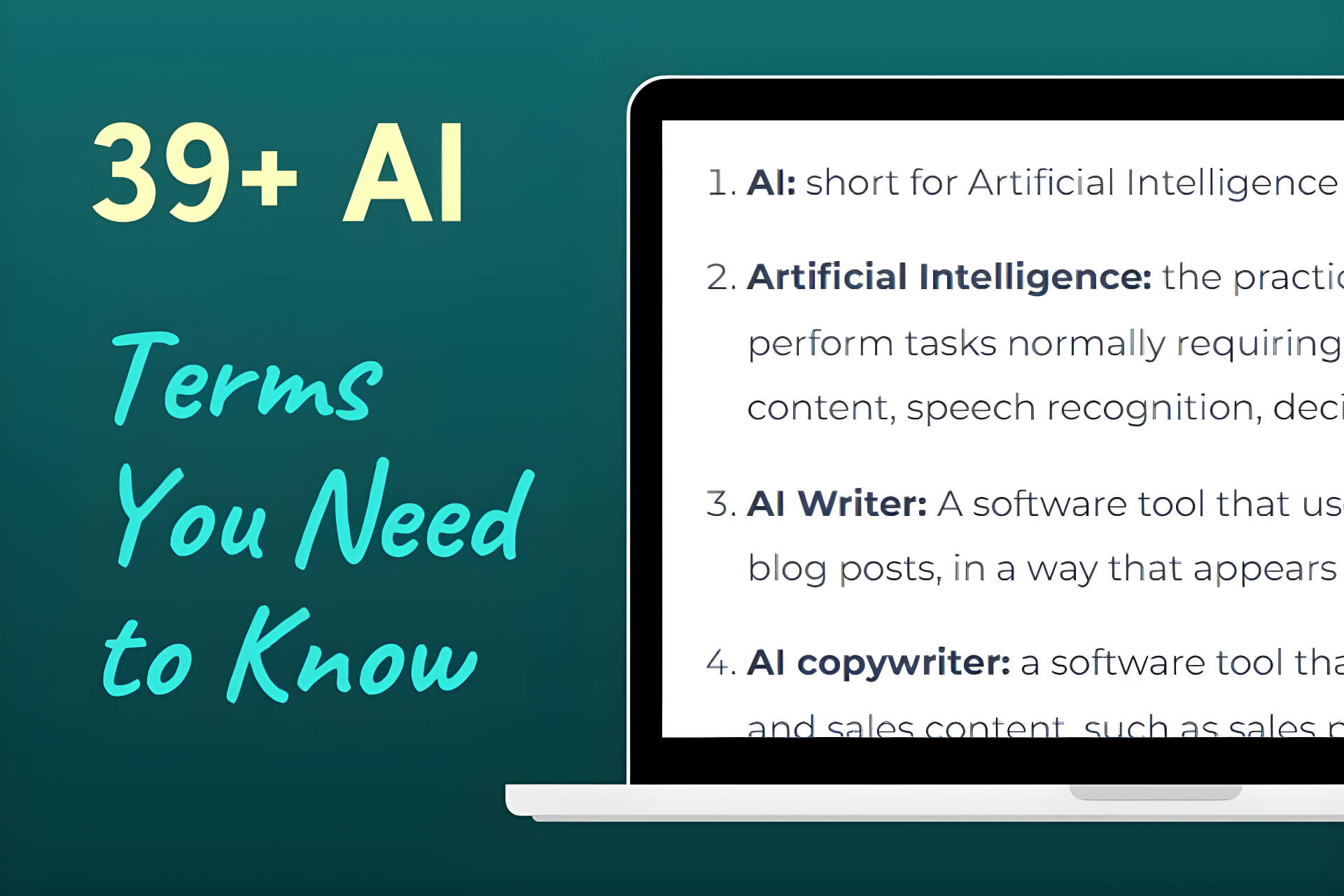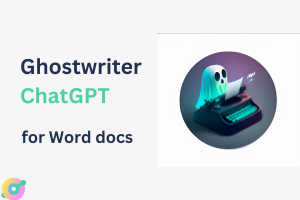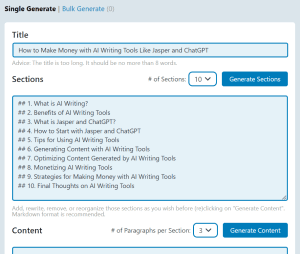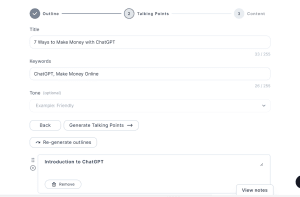Artificial Intelligence (AI) is reshaping the content development industry, allowing creators and marketers to quickly produce high-quality, authentic content.
As AI becomes increasingly accessible to businesses of all sizes, it can be hard to keep track of the terms being thrown around by industry insiders.
In this post, I highlight some of the most common AI terms that you need to know.
Artificial Intelligence: A Brief Overview
AI is the theory and development of computer systems able to perform tasks that normally require human intelligence. It uses algorithms to think, learn and act rationally. AI has a wide range of applications, the latest being AI writing, made possible by the deployment of GPT-3
A.I. Glossary for AI Terms
Some AI Terms include:
- AI: short for Artificial Intelligence
- Artificial Intelligence: the practice and study of designing computer systems able to perform tasks normally requiring human intelligence, such as visual perception, writing content, speech recognition, decision-making, and translation between languages.
- AI Writer: A software tool that uses artificial intelligence to generate content, such as blog posts, in a way that appears to have been written by a real person.
- AI copywriter: a software tool that uses artificial intelligence to generate new marketing and sales content, such as sales page copy and ad copy. This process is called AI Copywriting
- Automated marketing: the practice of automating parts of a marketing process by using software to manage, execute, and optimize the delivery of content.
- Bot: an automated program that can run tasks (such as email, messaging or social media updates) on behalf of a user.
- Marketing Campaign: the effort to attract visitors to your site.
- Marketing automation: the use of software to automate repetitive tasks, such as generating personalized emails on behalf of a user. A marketing automation software is a tool that allows businesses to send automated messages for email, SMS and social media posting.
- Algorithm: A set of procedures for, especially, solving mathematical problems. Or, put another way, an easy way to solve complex problems.
- Deep Learning: Refers to machine learning algorithms that attempt to model high-level abstractions in data by using multiple processing layers with complex architectures, such as neural networks.
- A.I. Writing: The act of writing programmatically with the use of artificial intelligence software tools.
- AI algorithms: algorithms that use artificial intelligence techniques, such as machine learning.
- Deep Learning: the practice of training a deep neural network using unsupervised or supervised learning.
- Natural Language Processing: a subfield of computer science and artificial intelligence concerned with the interactions between computers and human (natural) languages.
- Machine Learning: a subset of artificial intelligence in which computer algorithms are given the ability to learn and adapt when exposed to new data.
- Personalization: tailoring messages and products to the recipient based on information about them collected from different places across digital channels.
- Prediction model: a statistical model that uses input variables and algorithms to predict an output or a class label.
- Automated marketing: the practice of automating business processes, in order to increase efficiency and reduce risk.
- Machine Learning Automation: Utilization of machine learning technology to learn, adapt, optimize, and automate workflows for businesses.
- Machine Learning Chatbots: chatbots utilizing natural language and advanced analytics which are trained using hundreds of thousands of historical customer interactions, allowing for extremely accurate responses tailored to individual customers based on what they previously said.
- AI Writing Assistants (AiWA): Artificial Intelligence writing assistants are computer programs that assist human writers by generating non-original content using machine learning.
- AI Rewriting: the process of using AI tools such as Word AI to rewrite or edit content, and ‘clean’ it of spelling and grammatical errors.
- Bot: A robot that can interact with humans, especially if the robot is designed to look like a human.
- Robotics Process Automation (RPA): RPA is an automation technology for building, deploying, and operating robotic processes.
- Robot: a machine—especially one programmable by a computer— capable of carrying out a complex series of actions automatically.
- Chatbot: an artificial intelligence software application that uses text or speech to converse with human users, especially over the Internet.
- Robotic Process Automation: the use of software algorithms to process and carry out physical processes that would otherwise be carried out by humans.
- Machine Learning Content: content that is generated, edited and amplified using machine learning algorithms.
- Machine Learning Content Marketing: content marketing that uses artificial intelligence software based on machine learning to make smarter predictions about human tastes and behaviors.
- GPT-3: General purpose language generation (GPT-3) is a new model for generative machine learning developed by OpenAI.
- Automatic Content Production: the process of using machine learning to automatically write content on behalf of a business.
- SaaS: A Software as a Service application uses a cloud-based system to provide a convenient online service, typically accessed by means of a web browser.
- Bot Builder: A chatbot builder is an enterprise bot platform that allows companies to build and deploy chatbots into their websites and services.
- Natural Language Generation: the process of creating artificial, human-sounding text by a machine or computer program using statistical techniques and/or rule-based methods. NLP also includes syntactic parsing, which takes an input sentence and identifies the underlying structure
- AI Mode: A blog by Mysson that focuses on using AI writing assistants to create machine-generated content at scale. 🙂
- Priming an AI tool: the process of preparing an AI tool to write by setting the tone and mood for a piece of writing. This is done by using phrases or words that are known to be relevant to the topic at hand.
- Input: data that is used to give input or instructions to a computer program. Data (especially text data) can be fed into an algorithm or software in order to produce results.
- Output: information produced by a program or algorithm.
- Machine Learning Algorithm: A computer program that can learn to perform tasks without being explicitly programmed. These machine learning algorithms analyze data to discover patterns without any prior knowledge.












